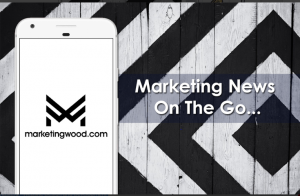“All my best thoughts were stolen by the ancients.”
― Ralph Waldo Emerson
The easy access to all kind of information and the simple process of sharing content and information on the internet are one of the things that make the internet so popular.
As in any other medium, the majority of content on the internet is subject to copyright. Whether we are talking about content, images or anything else that is considered to be authors work, they are all subject to copyright. Before downloading, editing and sharing an author’s work, for any purpose and in any media, you should check the terms of use and copyright. The copyright protection applies only on original works of authorship. This has been more important with the recent Google Algorithm updates which directly or indirectly give citation and credit to the original and the early publisher.
When we talk about printed materials (textbooks, books, etc.) or any source of audio or visual storage, we all know that they usually have visible warnings about copyright. But when we talk about the internet, these copyright rules are not always that clear. People are often not able to find a legal way to download, edit and later reproduce certain work.
The fact that you have unlimited access to some content on the internet doesn’t mean that the image, text, video or musical sequence is not subject to copyright and other legal limitations.
The act of protection of copyrighted material is subject to both domestic and international laws (copyright law). Only a small fraction of the content that we can find on the Internet can be considered as public property that is free for downloading, editing, reproducing and even used in commercial ways.
Some of the works that are usually subject to copyright protection are the following: movies and audiovisual works; Musical works and song lyrics; Literary works; Photos and images and many more.
However some works are free of copyright. Some of these works are: Titles and slogans; generally known and public graphic symbols; General descriptions of concepts and methods.
Many authors use copyright label on the bottom of their websites. This is a clear sign that the owner wants to protect the content of the website from unauthorized copying. Sometimes however this generic quote about protection of rights is not enough. In order to be fully protected the owner of the website needs to seek assistance from authorized copyright agencies. Current laws require protection of any new or altered content.
If someone decides to copy text content from some website and put that text on his own website it is very likely that the real author will find out about that. There are many paid and free programs that can quickly check possible cases of plagiarism.
Besides clearly visible statements about copyright protection of certain webpage or certain content on some websites, there are few other ways to protect the author’s work.
The content can also be protected with the use of some digital methods. These methods are sometimes invisible to human eyes. There are several ways to protect your content with digital methods and the most common is the one that uses simple illustration (usually on the image) with a printed text about copyright. Using watermarks is another effective method of protection.
In any case, make sure that you’ve read the copyright notification and it is always good to ask for permission from the author.
Sometimes it is even better to be unique instead of editing someone else’s work. Originality is very important especially in the online world where millions of people have access to thousands of websites. It’s always good to see what some established web owners are using to be so successful but adding something exclusively yours to your website will make a big difference. Whether it is an image or unique text, look for something engaging that will make your visitors come back again.

